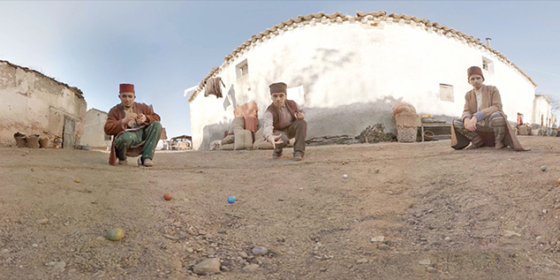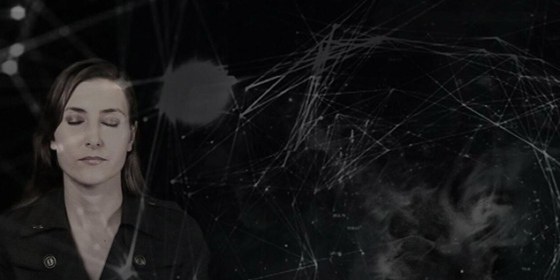
By Meghan Ventura | Community & Operations Manager, Games for Change
With VR’s promise to help us see the world from someone else’s point of view, one word has become nearly synonymous with virtual reality projects on real-world issues—empathy.
As creators and developers explore virtual technologies, they also aim to unravel how to measure and prove the impact of their project’s outcomes in increasing empathy and helping reduce implicit biases. While some have questioned whether empathy is the appropriate or only emotion to associate with such projects, this framing still dominates the impact conversation.
On Aug. 2, VR creators and storytellers will gather at the VR for Change Summit to share how their work is creating positive social change. The summit—the first of its kind—will focus on advancing virtual technologies for good by bringing together developers, artists, storytellers, journalists, researchers, activists and policymakers for dialogue, connections and debates focused on new initiatives to advance the field.
Many VR developers partner with domain experts and researchers for pre- and post-surveys with viewers or participants or draw on their own research background. Here are some of their approaches to measuring impact.
Countering abortion and clinic harassment
VR film Across the Line focuses on the experience of women accessing abortion and reproductive health services in America. It was co-created by Nonny de la Peña of Emblematic Group and 371 Productions/Custom Reality Services for Planned Parenthood.
Planned Parenthood worked with the strategic communications firm SKDKnickerbocker in close consultation with the Sea Change Program, an organization dedicated to transforming the culture of stigma around abortion, to interview people in Kansas City and Atlanta with moderate and conservative views about abortion. They found that experiencing the film led to decreased tolerance for clinic harassment and increased empathy toward women who decide to have an abortion.
“As VR has been shown to be a vehicle to shift empathy and raise awareness to new levels, the impact can be measured in terms of the empathy shift as well as the willingness of action after viewing,” said Molly Eagan, vice president of Planned Parenthood Experience at Planned Parenthood Federation of America.
Uniting students across the world

Grace Lau, director of VR at Global Nomads Group (GNG), aims to build a generation of empathetic, aware and action-oriented global citizens by enabling conversations between students from around the world who otherwise would not meet. These conversations among students in Jordan, New York and Kentucky enable youth to explore cultural identity, build multiple perspectives and develop 21st-century skills. GNG’s impact reporting also relies on surveys and interviews that aim to answer how VR develops students’ ability to consider another person’s perspective and what type of attitude or behavior change happens as a result.
“We have been working with Dr. Emile Breuneau, a leading expert on intergroup conflict and neuroscience in our virtual exchange programs,” Lau said. “Based on his data, we have seen significant increases in how he defines empathy among students who go through GNG programs.”
Corporate diversity training
Clorama Dorvilias, a UX interaction designer at Code for America, has explored new ways for designing corporate diversity training methods that could be effective, fun and engaging as opposed to obligatory. In her research on whether VR can solve for unconscious biases with gamification, she looks to measure impact through ascertaining the emotional engagement of users and their reactions before, during and after playing with her prototype. Using Unity3D and an Oculus Rift headset, she built a game in which the player is a tech engineer who has to find where their co-workers have snuck off to happy hour. The player navigates a maze-like office, which features mirrors that show the reflection of the player’s avatar, reminding them of the body that they are in. The game draws on positive association with physical characteristics while the player searches for their co-workers.
“VR training projects that aim to foster empathy or reduce social biases can be a powerful form of enhancing human cognitive and social intelligence and developing positive behavior,” Clorama said. “Tests like the Harvard Implicit Bias Test, which aims to reveal for implicit biases through measuring cognitive correlation with biological traits to positive and negative associations, can be administered before and after experiences.”
Measuring what makes human empathy tick
In her studies as a Ph.D Candidate at Stanford University, Fernanda Herrera aims to understand the psychological mechanisms that motivate us to feel empathetic and less prejudiced toward others by creating and testing VR interventions designed specifically to show a particular perspective to the user. At the Virtual Human Interaction Lab, she has measured the effect of a VR experience in which participants become homeless through both self-reporting measures and behavioral measures (e.g., whether or not people are willing to sign a petition).
“A future project could possibly look at an experience in which the user is able to experience and react to cultural differences in a positive manner,” Fernanda said. “Results would be measured by both self-report measures and behavioral measures since, in my opinion, the combination of both types of measures provides a more holistic picture of how users felt about the experience and whether or not they were motivated to behave positively toward a social target.”
Listening to viewer and player reactions

Even without formal measurements, the change in participants’ views are evident to many creators of VR for good. For example, New York-based media artist Zohar Kfir created Testimony, an interactive VR documentary that shares the stories of five survivors of sexual assault and their journey to healing. The project’s website invites individuals to share their stories and about two dozen people have contacted her to do so.
Jaehee Cho, creative director at Stitchbridge, developed an interactive VR experience around racially motivated police brutality. He posits that because viewers have only seen reports on police brutality on TV, trying Injustice made them feel like they are in the real situation. “You can even talk with characters in the scene, so some people couldn’t handle the situation because they were emotional,” he said. “By trying Injustice, people realize how serious this police brutality and racial problem is, and also it gives them a meaningful message.”
Learn more about these projects
These projects continue to lay the groundwork for effectively measuring impact in VR. Come hear from these creators and developers, storytellers, educators and researchers using VR, AR and other immersive technologies in radical new ways at the VR for Change Summit on Aug 2.
Learn more about VR for Change here. Register now and get 20 percent off your passes with promotional code g4mif20.